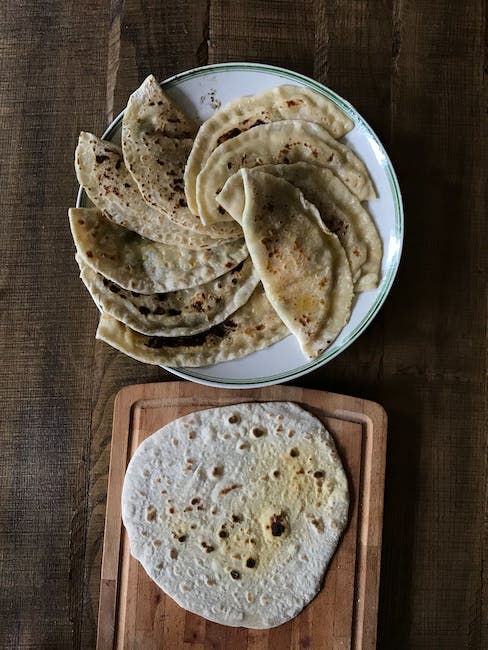Clarified Butter vs Ghee: Unveiling the Mysteries of Traditional Fats
When it comes to traditional fats, there’s often a bit of confusion surrounding clarified butter and ghee. Both have been staples in culinary practices for centuries, yet many home cooks and health enthusiasts are still unclear about what sets them apart. In this comprehensive guide, we’ll delve into the nuances of clarified butter and ghee, answering your burning questions and providing you with the knowledge to make an informed choice in your cooking and health endeavors.
Introduction: The Battle of Buttery Delights
Imagine a world where every dish you cook is infused with the rich, nutty essence of butter, but without the common drawbacks of burning or spoiling quickly. This is the realm of clarified butter and ghee, two forms of butter that have been refined to enhance their cooking properties and flavor profiles. But what exactly are they, and how do they differ? This post promises to explore the depths of these golden fats, offering insights into their production, nutritional benefits, and culinary uses. Prepare to embark on a flavorful journey that will elevate your understanding and appreciation of these beloved ingredients.
What is Clarified Butter?
The Basics of Clarified Butter
Clarified butter, also known as drawn butter, is butter that has been melted over low heat to separate the milk solids and water from the butterfat. This process results in a pure, golden-yellow liquid that can withstand higher cooking temperatures without burning, making it a favorite for sautéing and frying.
How to Make Clarified Butter
- Step 1: Begin by melting unsalted butter over low heat in a heavy-bottomed saucepan.
- Step 2: As the butter melts, the milk solids will start to separate and float to the top.
- Step 3: Skim off the foam and discard it.
- Step 4: Carefully pour the clear yellow liquid into a container, leaving behind the water and milk solids at the bottom of the pan.
What is Ghee?
Understanding Ghee and Its Origins
Ghee takes the process of clarifying butter a step further. It is a type of clarified butter that originated in ancient India and is commonly used in South Asian and Middle Eastern cuisines. Ghee is made by simmering butter for a longer period, which caramelizes the milk solids before they are strained out, resulting in a more pronounced nutty flavor.
The Making of Ghee
- Step 1: Melt unsalted butter in a saucepan over medium heat until it begins to bubble.
- Step 2: Reduce the heat and simmer, allowing the butter to go through stages of foaming and bubbling.
- Step 3: Once the milk solids turn golden brown and settle at the bottom, remove the pan from heat.
- Step 4: Strain the liquid through a fine-mesh sieve or cheesecloth into a jar, leaving behind the caramelized solids.
Clarified Butter vs Ghee: The Differences
Nutritional Profile and Health Benefits
Clarified Butter:
- Contains healthy fats that can improve heart health when consumed in moderation.
- Lactose and casein are mostly removed, making it suitable for those with mild dairy sensitivities.
Ghee:
- Rich in fat-soluble vitamins A, E, and D.
- Contains butyrate, a short-chain fatty acid beneficial for gut health.
- Often considered to be even more digestible for those with dairy intolerances due to its extensive cooking process.
Culinary Uses and Flavor
Clarified Butter:
- Ideal for high-heat cooking like frying and sautéing.
- Has a subtle, buttery flavor that enhances dishes without overpowering them.
Ghee:
- Has a higher smoke point than clarified butter, making it perfect for high-temperature cooking.
- Imparts a rich, nutty flavor that can add depth to both sweet and savory dishes.
Commonly Asked Questions
Can I Substitute Ghee for Clarified Butter?
Yes, ghee can be used as a substitute for clarified butter in most recipes. However, keep in mind that ghee has a stronger flavor that may alter the taste profile of your dish.
Is Ghee Healthier Than Clarified Butter?
Both ghee and clarified butter have similar nutritional profiles, but ghee’s additional cooking process may enhance its digestive benefits and increase its levels of antioxidants.
How Should I Store Clarified Butter and Ghee?
Both can be stored in an airtight container at room temperature for several weeks. However, for extended shelf life, refrigeration is recommended.
Conclusion: Choosing Between Clarified Butter and Ghee
In the end, whether you choose clarified butter or ghee comes down to personal preference and dietary needs. Both offer unique flavors and health benefits that can enrich your cooking experience. By understanding their differences and uses, you can confidently incorporate these traditional fats into your culinary repertoire, adding a touch of gourmet sophistication to your meals. So go ahead, experiment with both, and discover the rich, buttery magic they can bring to your kitchen creations.


